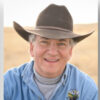It’s Groundhog Day for Yellowstone Bison

News broke late last week that a federal judge had ordered U.S. Fish & Wildlife Service to reconsider its 2015 decision not to grant endangered species status to the bison herds in Yellowstone National Park.
It’s fitting that I heard this news on Groundhog Day. After all, this story seems to be on a continuous loop…replaying like the movie of that title in one version or another every so often.
Fish & Wildlife received its first petition to declare Yellowstone bison as endangered in 1999. After eight years, the agency completed its “90 Day Review” (seriously) and determined that the petition lacked substantial information to warrant an endangered species listing.
Proponents of listing came back in 2009 with a revised petition; this time requesting that all wild plains bison be listed as endangered. The agency’s 90 Day Review took two years, resulting in another finding, stating, “(w)e conclude that the petition does not present substantial scientific or commercial information to indicate that listing the wild plains bison, or any of four proposed DPSs (Distinct Population Segments), under the Act as threatened or endangered may be warranted at this time.”
Undeterred, the proponents bounced back with yet another petition in 2014 asking again that the Yellowstone herds to be declared endangered. Fish & Wildlife dispatched that petition in 2015, citing insufficient new evidence. That’s the petition that the court has now ordered the agency to revisit.
Much of the news coverage on this issue is based on the petitioners’ assertion that the Yellowstone herd of more than 4,000 is “the largest and one of the last free-roaming, genetically pure groups” of bison in the world.
First of all, bison herds are increasing on public lands, as well as private ranches across North America. The International Union for the Conservation of Nature’s latest report on bison indicates that approximately 31,000 bison roam within 68 herds managed by government agencies and conservation organizations.
It’s the phrase “genetically pure” that really drives private bison producers crazy.
Genetics are an evolving field of science, with new technology regularly emerging. Geneticists avoid using the term “purity,” because new developments are always arising.
Even based on the current understanding of genetic integrity, Yellowstone bison are not alone in showing the lack of cattle genetic introgression. The bison herd at Wind Cave National Park has been tested and shown to be free of cattle genetic introgressions. Enter “genetically pure bison” into Google, and you’ll quickly come up with listings for six herds within the first twenty links that are referenced.
Don’t get me wrong: The National Bison Association cares about the genetic integrity of bison. But the cattle genetics in bison today are predominantly the remnants of some failed crossbreeding experiments conducted 130 years ago by the ranchers who helped save bison from extinction, and not because producers are now crossing our animals with cattle.
Our Code of Ethics prohibits crossbreeding bison with any other species, and many of our members are actively testing their herds to cull animals that show significant degrees of cattle introgression.
There are many issues facing the National Park Service as it strives to manage its bison herds. Saving the animals from extinction is not one of them.
